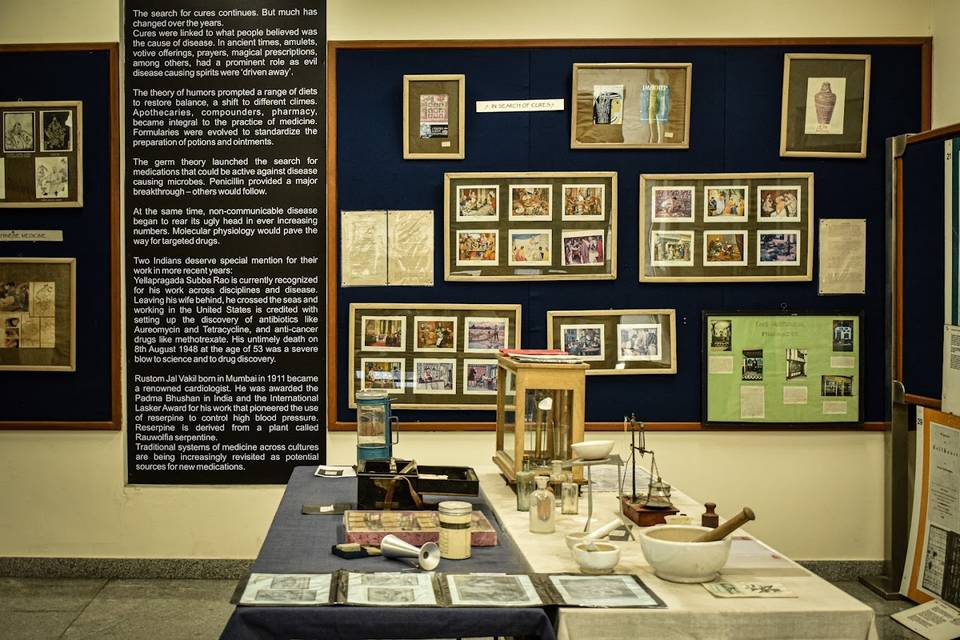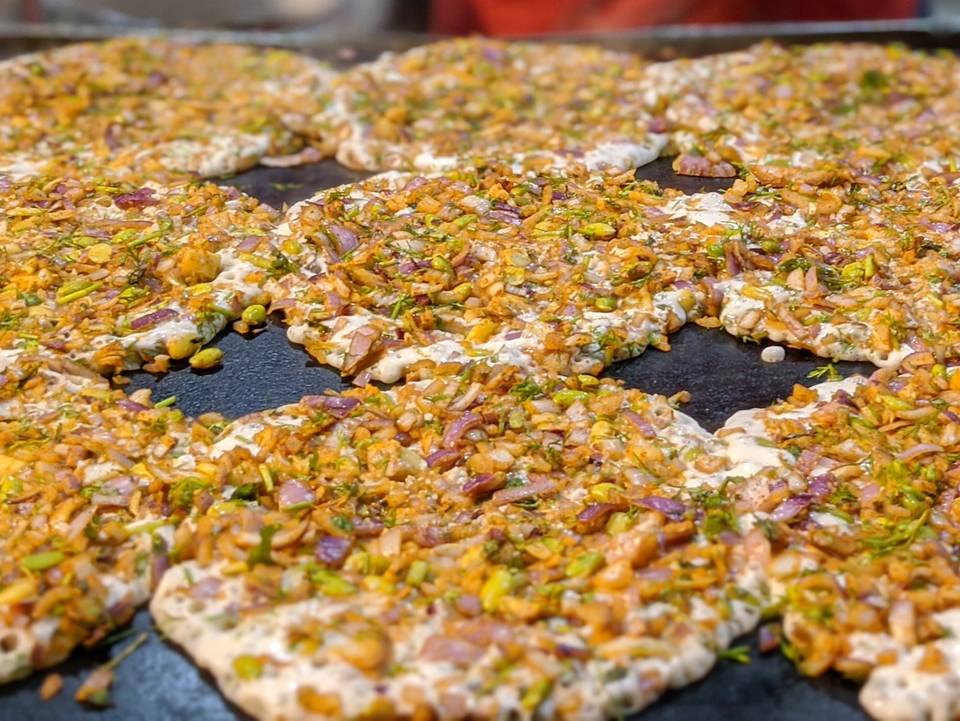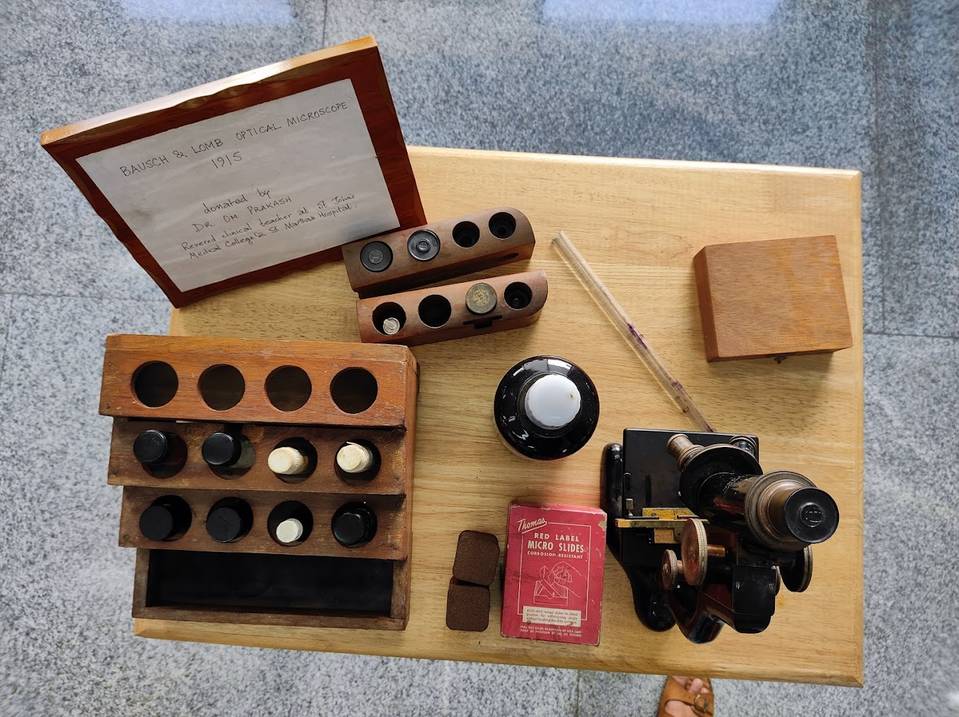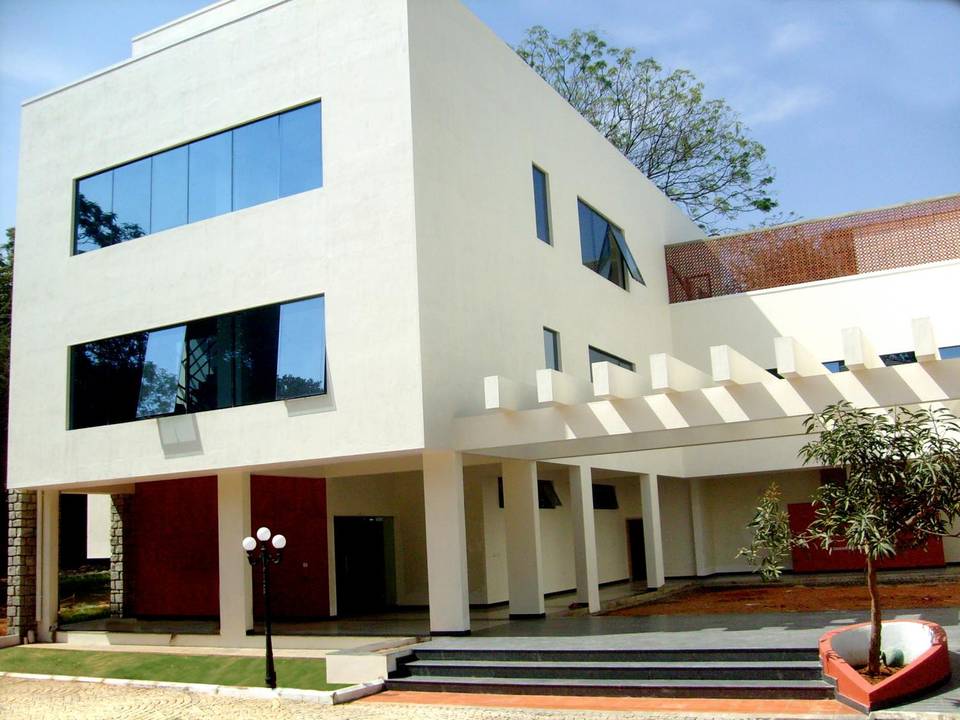Major General S.L.Bhatia Museum

entrance, St. Johns National Academy of Health Sciences, Gate no 4, Bank of Baroda, John Nagar, Bengaluru Bengaluru Urban 560034
Description
The Major General SL Bhatia Museum for the History of Medicine in Bengaluru brings alive important stages in the journey of medicine through its exhibits that include models, instruments, photographs and costumes, writes Meera Iyer
The Black Death, the dreaded plague that swept through Europe in the 1300s, felled thousands, nay millions. Through the throngs of the dead and the dying, swept a figure, black-robed, hooded and masked. Where there should have been a nose, he had a prominent beak. His eyes were hidden behind large circles of glass and in one hand, he wielded a long cane.
This figure, who seemed verily a Shadow of Death, was in fact a plague doctor. His bizarre get-up was meant to protect him from the plague. The good doctor used the cane to prod his patients. His ‘beak’ was stuffed with sweet-smelling herbs like mint and rosemary. This was supposed to protect him from the ‘bad and putrid air’ that in the medieval period was thought to cause plague. Whether the robes and herbs protected the doctor, we cannot say for sure, but I heartily agreed with Dr Mario Vaz, professor of physiology and the history of medicine, when he said, “He probably cut a terrifying figure.” Even in the bright environs of a museum, the all-too-realistic model of a plague doctor, cane held aloft, beak and glass eyes in place, made me want to edge away.
Dr Mario is the director of the Major General SL Bhatia Museum for the History of Medicine, located in the verdant environs of the St John’s Medical College, Bengaluru. The museum is the centre around which the Department of the History of Medicine at St John’s Medical College works.
The museum is named after Major General S L Bhatia, the first Indian Dean of Grant Medical College in Mumbai (India’s third oldest medical college), a director general of health service for India, the only physician recipient of the Military Cross for services during World War I, and a recipient of the Order of the Empire. In the early 1960s, he bequeathed his archives and collections to St John’s Medical College, and in 1974, he helped establish the Museum of the History of Medicine, the first of its kind in India. With its collections growing over the years, it is still one of the largest and most comprehensive of such museums in the country.
What’s inside?
The museum has a number of exhibits that are sure to keep both young and old minds engaged. There are photographs, costumes, interesting instruments and models. Apart from these are a number of prints – all original second edition prints of paintings by Robert Thom, and produced by Parke-Davis and Company – depicting major episodes and personalities in the journey of medicine from the earliest times to today. Behind each exhibit lies a gripping tale.
Dr Mario is an ideal raconteur, bringing alive the emotions and drama behind the milestones in medicine. Using the picture of a surgery being performed, Dr Mario told the story of the advent of anaesthesia. The excruciating pain of surgery performed without anaesthesia meant that patients rarely, if ever, resorted to surgeons. Surgeons, meanwhile, had the unenviable task of operating on patients who screamed in agony. In the 1840s, a dentist conducted a demonstration of what was to be a pain-free surgery using nitrous oxide — laughing gas — as an anaesthetic. But the experiment failed. Midway through the operation, the patient cried out in pain, prompting observers to jeer, “Humbug!”
Two years later, another dentist named William Morton persuaded the chief surgeon at the Massachusetts General Hospital to try ether instead. This time, the patient remained unconscious throughout. At the end of the surgery, the tearful surgeon told his hushed audience the words that every anaesthetist now knows: “Gentlemen, this is no humbug.”
Naturally enough for a museum on medicine, there are some exhibits which might churn the stomachs of the lily-livered amongst us. One such exhibit that caught my attention was of a traditional Western midwife’s kit, comprising a series of lethal-looking needles, each about the length of my finger and running the gamut from curved to straight, and thick to thin. Also included in the kit was a glass catheter, an item apparently not used any longer because, as Dr Mario remarked drily, “they used to keep breaking.” Next to the kit was a clipping of an article from an old medical journal talking about the removal of a broken glass catheter from the bladder of a patient.
The museum highlights Indian advances in medicine too. Amongst these are panels about Dr Yellaparagada Subba, an Indian biochemist with several achievements to his name, including understanding the role of adenosine triphosphate (ATP) in cells, and from the medical point of view, discoverer of antibiotics like the tetracycline drugs, in use even today. Dr Mario also enlightened us about the methods used by ancient Indian plastic surgeons, some of which are remarkably similar to modern procedures.
Even more fascinating were the traditional methods of inoculations against diseases like small-pox that Dr Mario and the museum’s curator, Radhika Hegde, informed us were in use even until the 1800s.
Though the museum was established in the 1970s, it has been open to the general public only from this month. According to Radhika, their primary goal is to reach out to schools, especially elementary and secondary school children, in the hope of enriching their learning. The Museum is not-for-profit and does not charge entry fee at present.
Visitors who would like to visit the museum may email Radhika Hegde at radhika.h@sjri.res.in, or call 9632172577.
Image Gallery
FEATURES
Timing
9 a.m. - 5 p.m.
CONTACT
Phone
+91 80 49467000
Business Email
Website




